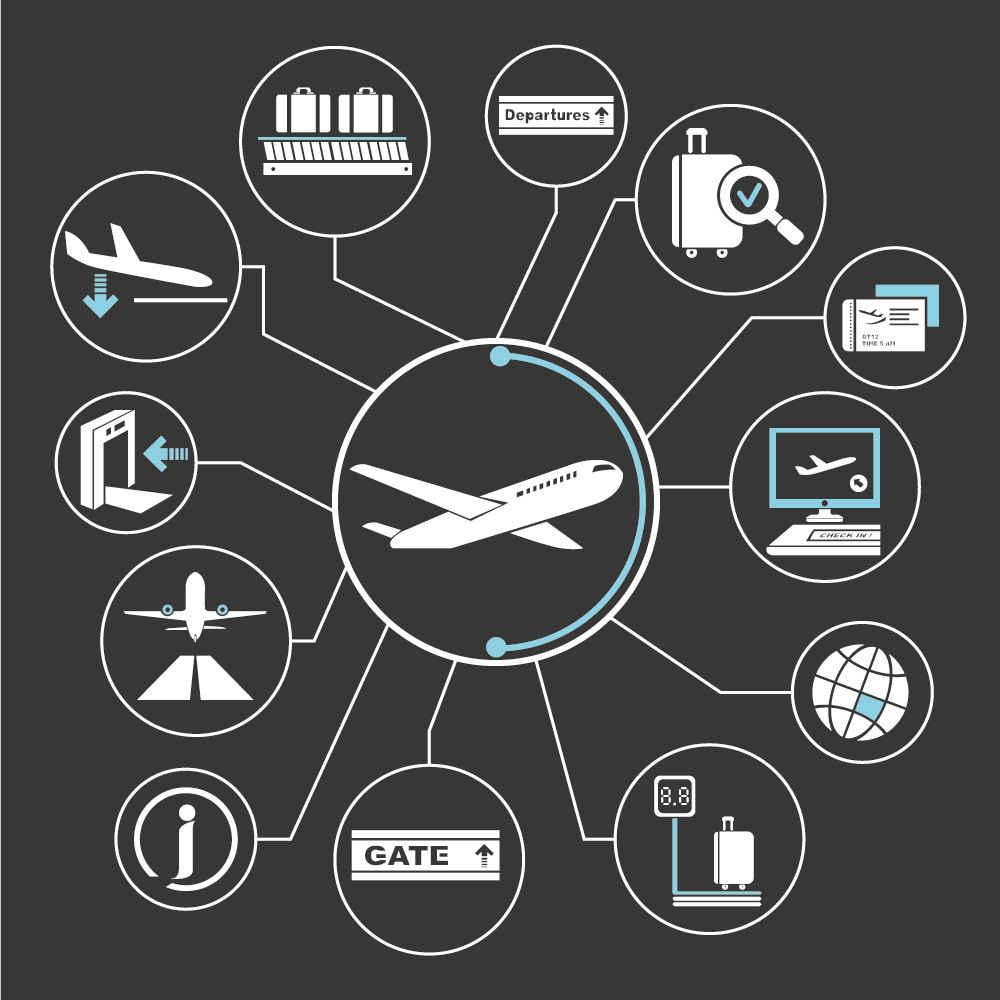
Air travel has grown tremendously in the last couple of decades, with airports playing a significant role towards it. The experience a customer has with an airline is directly proportional with the experience at an airport. In order to enhance customer service for passengers and ensure a comfortable experience, it is important that the airports provide quality service as well.
Passengers are often faced with long queues, obtrusive security protocols, rude airport staff, unclean restrooms as well as a lot of hassle getting through the customs etc. Airport management needs to find a perfect balance between passenger convenience and operational efficiency. Some of the ways this can be achieved are as follow:
Passengers often complain about not having the information, or not being updated with the changes in their flight plans. Airports and airlines need to work together to provide information such as check-in reminders and ticket confirmation. Airports also need to clearly communicate the facilities available at the airport, such as Wi-Fi, restaurants, cafes and shops. If passengers are provided with timely flight updates on their mobile phones, it would save passengers a lot of hassle and inconvenience. Moreover, estimated time could be calculated for baggage claim, so that passengers don’t have to wait for hours. Whenever there is a delay or change in the flight schedule, the airport management and the airlines need to coordinate effectively to make sure that the passengers do not face any inconvenience. In case of a possible disruption, airport management, baggage handlers, air traffic services must come together and collaborate to deploy contingency plans.
Technology should be deployed to improve processes. Many airports now issue mobile boarding passes and automatically generated text messages to passengers, informing them about flight changes etc. Airports could install self-service technologies, like Kiosks at each airline counter, which can help save time and process boarding passes more efficiently. This will result in shorter queues and more convenience for the passengers.
Many passengers complain about lack of directions and signs at airports, which confuses passengers and results in too much time wasted in finding the desired terminals, boarding gates or information desks etc.
Improving airport design and enhancing signage should be one of the top priorities of the airport management. Airports’ need to use emotionally intelligent signs, which will assist passengers in finding their way through the airport. Airport management could introduce signs indicating walking distances from one terminal to another, length of queue, wait time for taxi and airport rules.
Passengers often complain about unclean toilets and waiting areas. Airport management should make sure that cleanliness is maintained at all times. Training the cleaning team to focus on time management and ensuring hygiene is essential. Tasks should be effectively divided, so each worker is aware of their responsibility and follows through on maintaining cleanliness.
Hiring more cleaning staff could help, in addition to designing toilets and airport lounge in such a way that it facilitates cleanliness. Ideally, airport management should aim for spotlessly clean terminals and toilets.
For many passengers, being able to relax and rest is one of the most important factors in air travel. Airports should make sure that passengers feel relaxed, since they have hours of air travel ahead of them, after their stay in the waiting lounge. Airports should have comfortable seating arrangements with electrical outlets, so that passengers don’t have to compete for limited number of power outlets along the walls.
Passengers often complain about not being able to rest because somebody has to take care of the luggage. In order to solve this problem, airports should provide locker facilities, where passengers can safely lock their luggage and sleep on the reclining chairs. Airports could install massage chairs in the waiting lounge so that passengers can relax while they wait for their flights.
Some airports also offer mini spas and salons for customers, who are looking to relax with an express manicure or a back massage. Providing such leisure and entertainment for travelers will enhance customer experience and build loyal customers.
Passengers want to relax and be comfortable while they are travelling. Airports must be able to provide passengers with such an ambience that helps them relax. This can be achieved only through changing the whole experience, which includes interior, airport processes, and simpler navigation and comfortable furniture. Airport management should aim to make airports a place where passengers feel comfortable spending time.
Processes should be streamlined so that passengers don’t have to worry about every little detail. All the processes should be well-managed to ensure smooth functioning of the airport and management must work towards creating a stress free environment for travelers.

Healthcare workers are entrusted with the great responsibility of caring for people. In order to continually offer comfort and care to people, there are certain skills that healthcare professionals need to master. Of course there are the obvious ones related...
Read More
Creative thinking is one of the most important and sought after soft skills that you need to acquire in an increasingly digital landscape of 2021 and beyond. Creative thinking skills are required in many different job roles to come up...
Read More
Sales are the backbone of any business and great salespeople are an asset for the company. Some people are naturally gifted in the art of persuasive communication and negotiation skills required to convince clients and effectively sell more. However, certain...
Read More